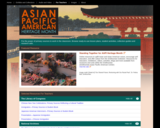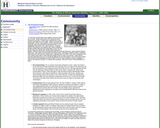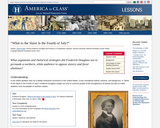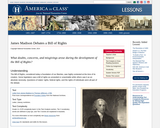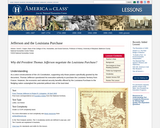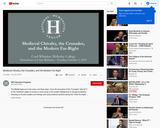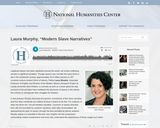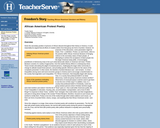
Given the secondary position of persons of African descent throughout their history in America, it could reasonably be argued that all efforts of creative writers from that group are forms of protest. However, for purposes of this discussion, Defining African American protest poetrysome parameters might be drawn. First—a definition. Protest, as used herein, refers to the practice within African American literature of bringing redress to the secondary status of black people, of attempting to achieve the acceptance of black people into the larger American body politic, of encouraging practitioners of democracy truly to live up to what democratic ideals on American soil mean. Protest literature consists of a variety of approaches, from the earliest literary efforts to contemporary times. These include articulating the plight of enslaved persons, challenging the larger white community to change its attitude toward those persons, and providing specific reference points for the nature of the complaints presented. In other words, the intention of protest literature was—and remains—to show inequalities among races and socio-economic groups in America and to encourage a transformation in the society that engenders such inequalities. For African Americans, Some of the questions motivating African American protest poetrythat inequality began with slavery. How, in a country that professed belief in an ideal democracy, could one group of persons enslave another? What forms of moral persuasion could be used to get them to see the error of their ways? In addition, how, in a country that professed belief in Christianity, could one group enslave persons whom Christian doctrine taught were their brothers and sisters? And the list of “hows” goes on. How could white Americans justify Jim Crow? Inequalities in education, housing, jobs, accommodation, transportation, and a host of other things? In response to these “hows,” another “how” emerged. How could writers use their imaginations and pens to bring about change in the society? Protest literature, therefore, focused on such issues and worked to rectify them. Poetry is but one of the media through which writers address such issues, as there are forms of protest fiction, drama, essays, and anything else that African Americans wrote—and write.
- Subject:
- English Language Arts
- Reading Literature
- Material Type:
- Lesson
- Reading
- Author:
- National Humanities Center
- Trudier Harris
- Date Added:
- 05/03/2019
